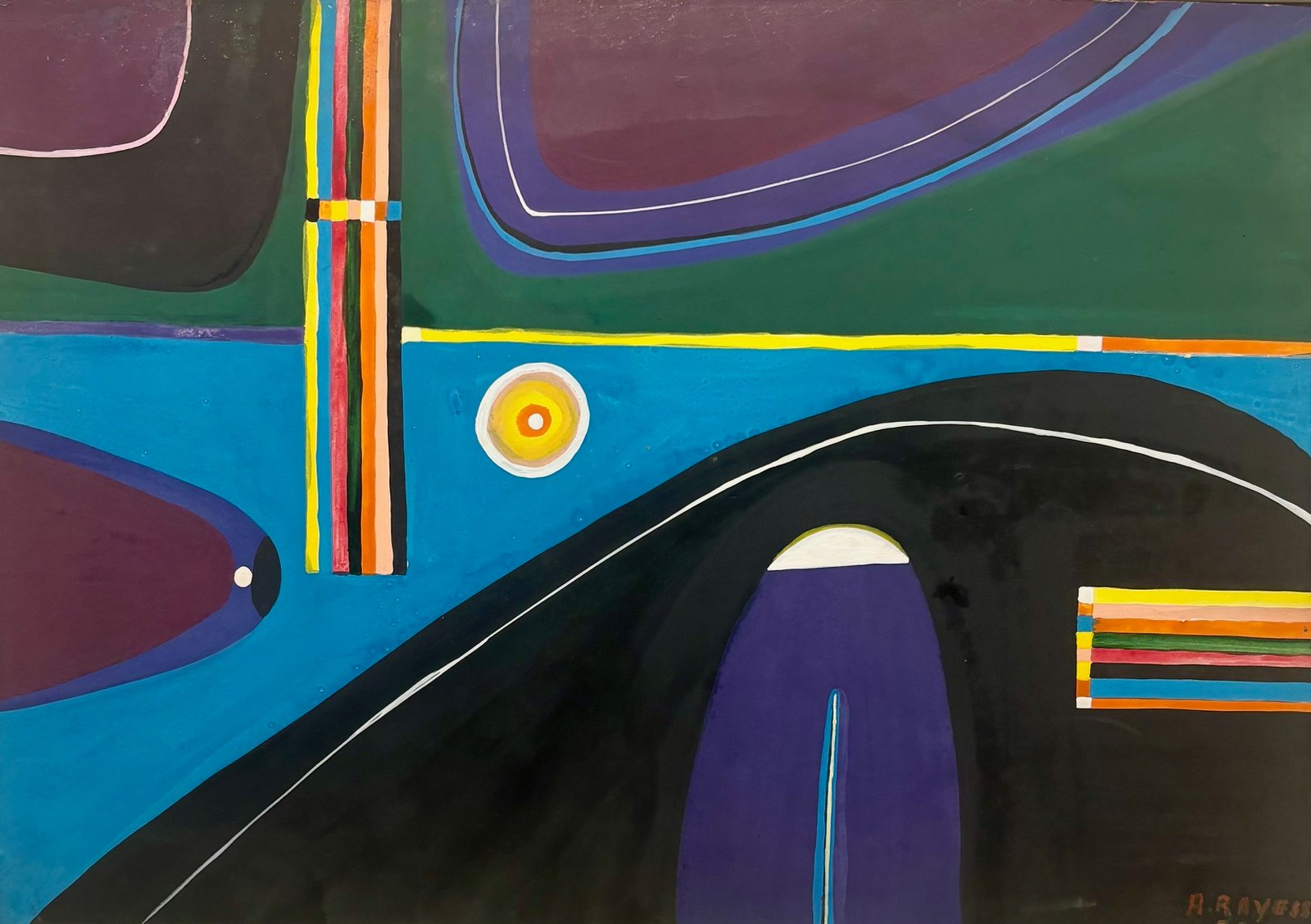An Article by DM (755 words, 4 min. read)
Movements of Abstractionpresented at the USEK Museum from October 9 to November 30, brings together a distinguished selection of works that retrace the evolution of abstraction in Lebanon between the 1950s and the 1970s. This period marked a turning point in the country’s visual history, when painting shifted from depiction to meditation, from description to sensation. Within this transformation, the canvas became an open space for rhythm, structure, and light, a meeting ground where modern thought and local identity intertwined.
A New Language of Form
The decades following the Second World War saw Lebanon embrace a spirit of renewal. Beirut emerged as a vibrant cultural center where artistic ideas circulated freely between East and West. Painters of this generation moved beyond academic realism and orientalist themes, opening themselves to the freedom of abstraction. Through color, gesture, and geometric construction, they discovered a language that expressed not what was seen, but what was felt: a language of essence.

Abstraction in Lebanon was never a rupture; it was a reconfiguration. Heritage was not replaced, but reinterpreted through rhythm, balance, and order. The light of the Mediterranean, the geometry of the landscape, and the harmony of traditional ornament all found new expression through modern forms. This fusion gave rise to a distinct aesthetic: Lebanese abstraction at once contemplative, architectural, and lyrical.
The Selection and Its Meaning
The selection presented by the USEK Museum reflects both historical depth and curatorial coherence. The works gathered form a visual archive of transformation. Canvases are supports where intuition meets discipline, where the act of painting becomes a process of reflection. Each piece bears witness to a generation’s engagement with form as a path to understanding.
Surfaces unfold through successful layers of pigment, where transparency meets solidity. Lines trace invisible architectures, while gestures suspend motion in balance. The variety of materials, oil, gouache, and mixed media, reflects an era of experimentation, where the texture of paint became a voice in itself. Some compositions suggest expansion through large chromatic fields, others focus inward, capturing vibration and silence. Together, they reveal the multiplicity of abstraction’s forms, geometric, lyrical, symbolic, yet united by a single impulse: the search for harmony through color and form.
The Voices of a Generation
Jean Khalifé’s chromatic compositions radiate quiet energy, their layered tones creating depth without weight. His colors float, intertwining light and movement into a meditative rhythm.

Aref Rayess introduces a sense of construction and balance; His compositions are built like architectural poems, each plane of color aligned with thoughtful precision.

Mounir Najem’s works translate the vertical rhythm of Beirut’s urban space into visual harmony, combining structure with a lyrical flow of pigment.

Halim Jurdak explores the subtleties of restraint. His brushwork is measured, his surfaces live with controlled intensity, revealing the tension between silence and expansion.

Each creator transforms abstraction into a distinct language, yet their voices converge in a shared pursuit: to give form to the unseen, to turn painting into a mirror of thought and rhythm.
The Curatorial Vision
Curated by Elsie Deek Aboujaoude, Movements of Abstraction embodies a vision of continuity and reverence. Through her thoughtful eye, the exhibition unfolds not as a chronology but as a dialogue between creators. Her approach restores coherence to a movement often fragmented by time, revealing the unity beneath its diversity.
Her curatorship emphasizes the relationship between abstraction and heritage — how these works, though shaped by global modernism, remain deeply rooted in Lebanese identity. She invites the viewer to perceive abstraction not as departure, but as expansion; Not as escape, but as discovery. Under her guidance, the collection becomes a landscape of reflection, linking past and present through a seamless thread of vision.
The Living Legacy Allure
The works presented in Movements of Abstraction form more than an archive; They form a living continuum. They mark a period when painting in Lebanon aligned with the universal momentum of modernism while preserving its spiritual and cultural resonance. Each surface holds the rhythm of time: color as breath, line as memory, texture as presence.
This legacy endures in the language of contemporary creation, where the lessons of those decades continue to resonate. The geometry of thought, the poetry of gesture, and the harmony of tone remain at the heart of Lebanese abstraction. They remind us that beauty in form is never static, it evolves, renews, and expands through generations, carrying within it the same pursuit that once began in the studios of Beirut: the desire to turn matter into meaning, and silence into light.

